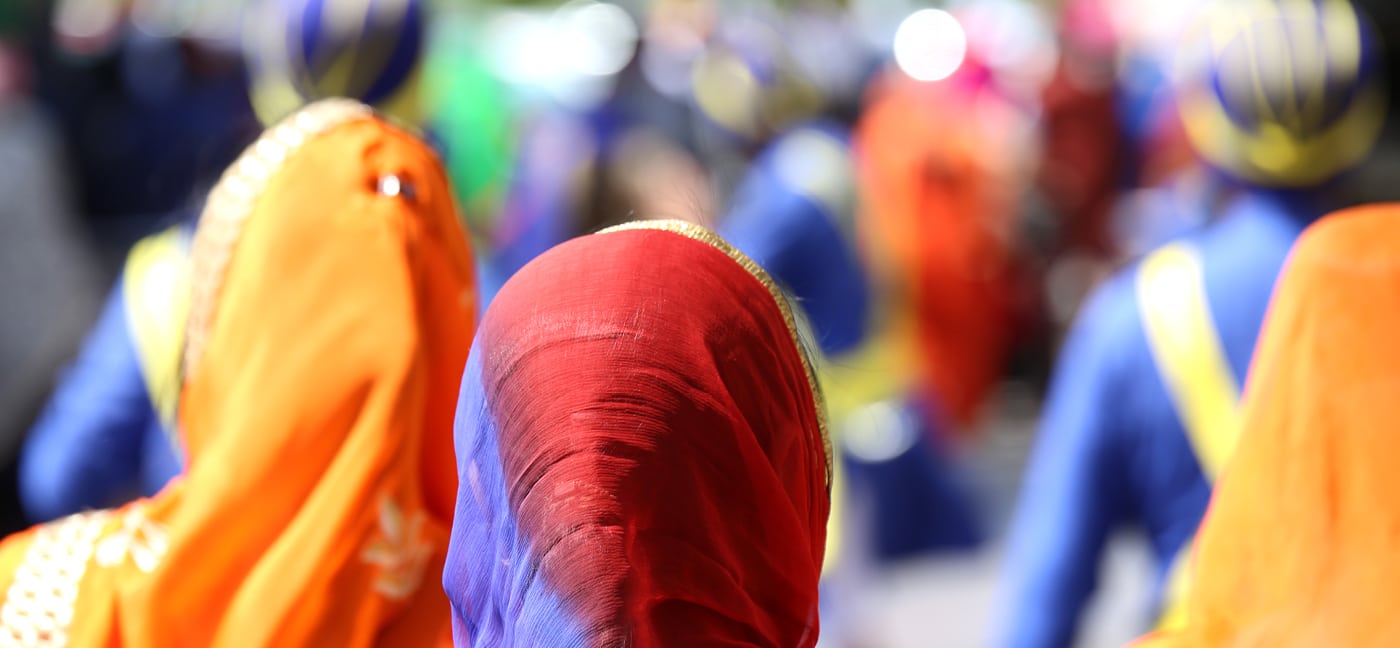The History of Vaisakhi from a Sikh’s Perspective
Satnam Singh

In India, Vaisakhi is a month where the year’s crops are harvested. It’s a joyous occasion when farmers and their workers celebrate their success. However, Sikhs celebrate Vaisakhi for another reason; on this day, a new crop of mankind was created— “The Khalsa.”
On the day of Vaisakhi in 1699, a revolution occurred in the Punjab. At Kesgarh Sahib in Anandpur, a new nation was created by Guru Gobind Singh— a nation of warriors who fought against oppression; a nation who fought for the poor and the needy; a nation who fought for the rightful cause of mankind.
The Guru convened a large gathering in Kesgarh at Anandpur. The Sikhs were invited by special “HukamNamas” (orders) from faraway places. Divine music was sung and as the chanting of Asa Di War (morning hymns) concluded, the Guru retired inside the tent. He then came out and brandished his sword and addressed the assembly, “My devoted friends, this sword is daily clamoring for the head of a dear Sikh. Is one among you ready to lay down his life at a call from me?” There was a deep silence and everyone wondered as to what the Guru had planned.
At last Bhai Daya Ram, a 30-year-old Khatri of Lahore, stood up and bowing himself before the Guru, he offered his head. The Guru took him into the tent. A few moments later he came out with blood dripping from his sword; again, he made the same request and four more followed including: Bhai Dharm Das, a 33-year-old farmer from Delhi; Bhai Mokham Chand a washerman of Dwarka; Bhai Sahib Chand a barber of Bidar; Bhai Himmat Rai a water carrier of Jagannath.
After taking the fifth man inside, the Guru took a longer time to come out. At last, he appeared with his sword sheathed, his face beaming with joy and satisfaction. Behind him walked those, who had apparently been killed. They were all dressed like the Master in saffron garments. Their faces, dress, and appearance were like the Master. They had given him their heads, and he had given them himself and his glory.
The five Sikhs who had given the Guru their heads were titled the “Five Beloved Ones” (Panj Piyaray). They were then requested to focus their thoughts on the Almighty God. The Guru then stirred the pure water in an iron vessel with the Khanda (two-edged dagger), until the prayers prescribed for the ceremony were chanted.
The use of a Khanda has a deep meaning. The first edge of the Khanda signifies the creative power of life and its sovereign strength, it’s immortality that can never be overpowered. The second edge of the Khanda signifies the power of chastisement and justice which protects truth, and all those who believe in God and truth. The iron vessel in which the pure water was stirred, signifies the strength of heart and mind. The chanting of hymns symbolizes divine power and is meant to give the Sikhs a strong faith in their religion and in the Almighty Lord.
Sugar crystals (Patashas) were added to the holy water (Amrit), which, the Guru’s wife Mata Sahib Kaur brought in. This was meant to bless the initiates, not only with courage and strength, but also “with the grace of womanly sweetness.” With the Amrit prepared (which was called “Khanday Ka Phul”), the Guru stood up and asked the Five to kneel. The Guru showered the Amrit in the eyes of each and asked them to speak aloud, “Waheguru Ji Ka Khalsa, Waheguru Ji Kee Fateh” (wonderful God’s is the Khalsa, and wonderful God’s is the victory).
The Amrit was sprinkled in their hair and each was asked to drink the Amrit from the same vessel. This transformed them into lions, knitting them together in a brotherly love—destroying the distinctions of caste and creed. After this, the Guru gave each the title of Singh, or lion.
After instructing the Five, the Guru himself knelt before them with folded hands and prayed for them to initiate him into the new faith. A similar practice was followed and Guru Gobind Rai then took the title of Singh and became Guru Gobind Singh. They became mutual protectors of each other and there was no difference between Guru Gobind Singh or his Khalsa (meaning “The pure one who seeks for Truth”). This gave the Sikhs a perfect principle of democracy, the Guru declaring wherever any of the Five were, there he would be. The “Five Beloved Ones” will have an authority superior to that of his own.
News of this unique event was recorded by a Persian news writer and the official report was sent to Aurangzeb, the Mughal emperor of India at the time. The report quoted the instructions of Guru Gobind Singh to his Sikhs after they were baptized. The instructions were: “Let all embrace one creed and obliterate differences of religion. Let the four Hindu castes who have different rules for their guidance abandon them all, adopt the one form of adoration, and become brothers. Let no one deem himself superior to another…”
![]()